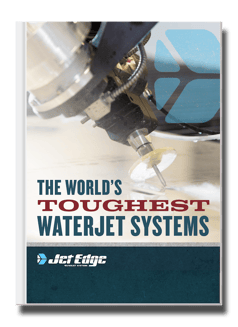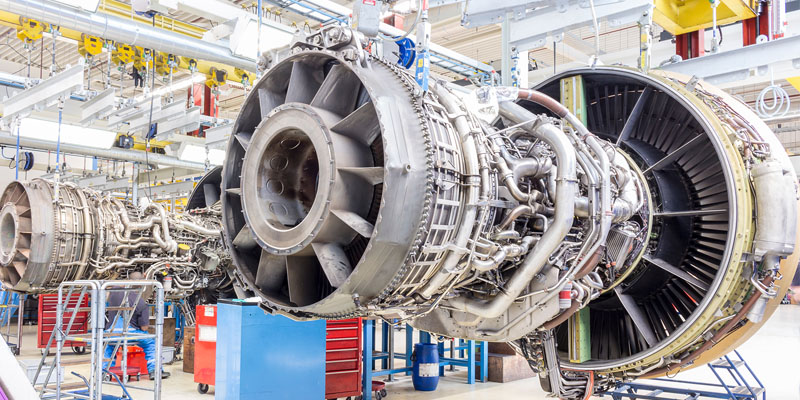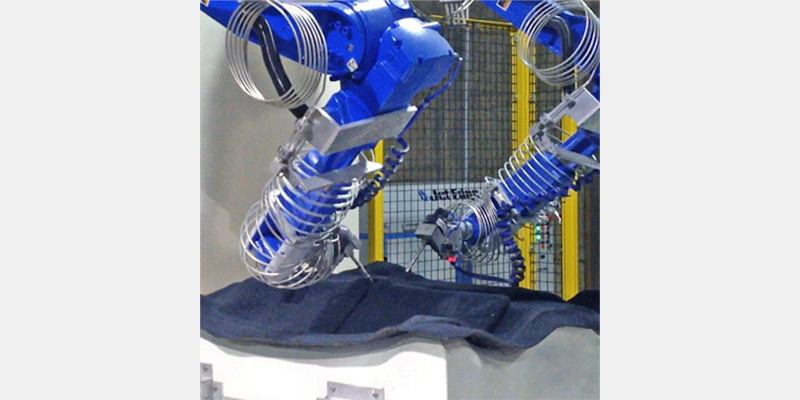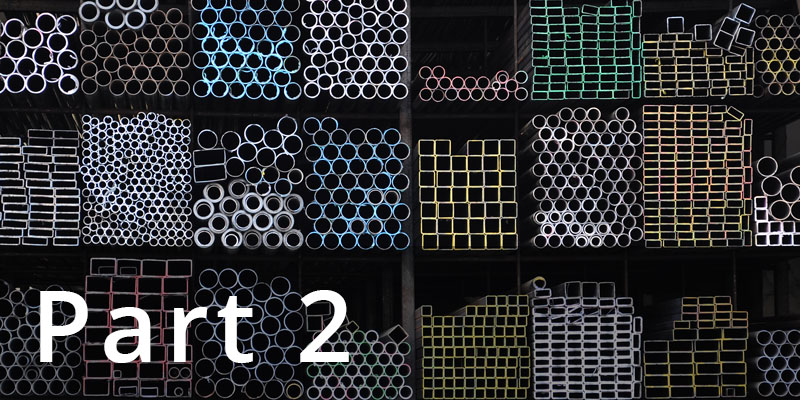The decision to add a water jet cutting system demands a comprehensive evaluation process. So, let’s look at what goes into deciding between buying a water jet system and outsourcing metal cutting.
Critical decision criteria start with assessing the current state of your operations and estimating the acquisition cost and operational expenses (consumables, O&M, training, and others) of buying a water jet.
Then, you must create a similar estimate of new revenue potential, improved material utilization (reduced scrap), efficiency improvements (elimination of additional edge finishing steps), the ability to add new materials to your cutting capability menu, and the ability to offer your customers highly complex part production.
But we often hear, “How do I gather that data when I haven’t had experience with a water jet system?” There are a couple of options here. Seek the advice of a trusted expert like Jet Edge or “kick the tires” by contracting out water jet cutting jobs. Let’s explore the decision process, including the buy or outsource option.
Understanding Water Jet Systems
Like other industrial cutting technologies, the water jet category of cutting tools takes its name from the cutting technique. A water jet machines cuts materials using an ultra-high-pressure jet of water, as high as 90,000 psi, depending on the tool configuration. The precision and first-cut edge finish rival or exceed those of alternative technologies.
A simplified anatomy of a water jet system includes the cutting bed, water filters and supply pumps, intensifier pumps, cutting heads, abrasive management components, water collection/recirculation equipment, and CNC software. This combination of components delivers an extraordinarily focused high-pressure jet of water or water and abrasive onto the material. The resulting cuts typically meet edge finish specifications, and the water jet's natural cooling properties eliminate heat-affected zone (HAZ) damage.
To make an incredibly versatile system even more capable, the breadth of materials a water jet can cut is unmatched by any other technology. These include rubber, plastics, foam, composites, stone, glass, ceramic, and more.
Evaluating Your Current Operation
To start your buy or contract-out analysis, take a look at your current operation and consider the following metrics:
- What is your typical equipment utilization percentage?
- How many shifts do you work?
- Characterize your typical order, including the number of pieces, complexity (2, 3, 5-axis), required lead time, cut set-up time, material scrap loss percentage, and secondary finishing steps.
- What is your maximum material thickness capability?
- Are you able to cut every material your customers want?
- Do your customers ask you to cut complex, 5-axis parts?
Here’s a table to capture your current state with a column for improvement goals.
|
Characteristic |
Current State |
Goal |
|
Equipment utilization (%) |
|
|
|
Number of shifts currently work (#) |
|
|
|
Typical order – pieces (#) |
|
|
|
- Complexity (2, 3, or 5-axis) |
|
|
|
- Required lead time (days) |
|
|
|
- Set-up time (hours) |
|
|
|
- Scrap loss (%) |
|
|
|
- Secondary finishing (Y/N) |
|
|
|
- |
|
|
|
- |
|
|
|
- |
|
|
|
- |
|
|
|
Maximum material thickness capability (inches) |
|
|
|
Able to cut every material your customers want (Y/N) |
|
|
|
Able to cut the most complex parts (Y/N) |
|
|
|
|
|
|
|
|
|
|
Looking at the current state of your operations and comparing where you are now regarding efficiency, utilization, quality, and meeting customer needs provides an informative snapshot of areas of opportunity to grow your business and improve the bottom line. With this in mind, now you can tighten your focus on the rest of the buy or contract-out analysis.
Cost Analysis
So many options are involved in this decision; another tabular approach provides a convenient way to ensure you consider every variable related to your operation’s goals. The following table assumes you have sufficient physical space for a water jet cutting system, and your local power and water utilities will support the addition of this precision fabrication solution.
Typical costs include:
|
Purchase a water jet |
||
|
Inputs |
Description |
Cost |
|
System cost drivers |
||
|
- Number of cutting heads |
|
|
|
- 3 or 5-axis capability |
|
|
|
- Table size |
|
|
|
- Maximum operating PSI |
|
|
|
- Intensifier pump options |
|
|
|
- Open or closed loop |
|
|
|
- Water only or abrasive |
|
|
|
Water jet system installation |
Space prep, installation, start-up |
|
|
Operator training |
Set-up, operation, safety |
|
|
Ongoing operating costs |
||
|
- Annual maintenance |
Manufacturer’s recommendations |
|
|
- Consumables |
Abrasives, filters, seals, nozzles |
|
|
- O&M labor |
|
|
|
Cost to produce a part in-house |
Equipment, materials, labor |
|
|
Outsourcing water jet cutting jobs costs |
||
|
Cost to perform the job |
Material, labor, markup, delivery |
|
|
Contracts |
Legal expenses to develop performance contracts |
|
|
Quality inspection expenses |
Labor, travel |
|
|
Long-term commitments |
Cost, flexibility |
|
|
Priority versus the outsourcing provider’s customers |
|
|
Once you have the overall costs of in-house versus outsourced fabrication, you’ll need to estimate the costs of producing a job for each option. We recommend using one of your typical jobs as the basis for this break-even calculation. If you would like, one of our engineers will gladly help you estimate the in-house side of things.
Considerations Beyond Cost
It’s essential to consider non-cost factors in your buy or contract-out decision. The following areas top our list of factors you should consider. And it goes without saying that you must get everything in writing.
- Ensuring quality—You’ll need a process to check the outsourcing provider’s final quality, which may include having your own QA person on-site during production.
- Rework expenses—You’ll need to understand who pays for rework costs, including material, labor, and set-up.
- Project priority — You’ll need assurances that your project will receive the same priority as the outsourcing provider’s existing customers.
- Lead times and flexibility—You’ll want firm commitments to lead times that meet your customers’ requirements and the scheduling flexibility the outsourcing provider offers.
- Intellectual property and design secrecy—You’ll need to establish strict requirements for protecting your company's and customers' intellectual property and proprietary designs.
Deciding Between Buying a Water Jet System and Outsourcing Your Metal Cutting
In our experience, expanding your in-house capabilities with a water jet system makes the most sense regarding production flexibility, maximizing quality control, compressing lead times, enhancing material handling capability, increasing material utilization, achieving higher project profitability, and managing your customers’ satisfaction.
Saying that, is there ever a situation where outsourcing a water jet job to another company makes good business sense? The short answer is yes; there are situations where outsourcing makes sense. Here are some examples:
- You or your customer want to see the results of water jet machining firsthand.
- One-off opportunities where a project’s specifications require water jet fabrication.
- Unique jobs involving materials you currently cannot cut in-house.
- Local water-use restrictions prohibit you from having your water jet system.
- You do not have the physical space to install the water jet and cannot expand your facility.
Talk to Jet Edge
Let’s recap: When deciding between buying a water jet system and outsourcing metal cutting for your business, you must thoroughly consider both cost and non-cost variables. In most cases, having a water jet cutting capability inside your operation makes the most sense. However, there are situations where an outsourced option will serve your needs better.
Contact us today to talk more about your in-house versus outsourcing analysis and to learn how to increase your service offering to your customers. You can also reach us by phone toll-free at 1-800-JET-EDGE (538-3343) or internationally at +1-763-497-8700.
Visit our Blog Library and Comprehensive Video Collection
Click here to view all of our water jet resources in one convenient place!

Check Out Our Digital Brochure!
Since 1984, Jet Edge has been designing and manufacturing Ultra-High-Pressure Water jet technology that doesn't back down. Our systems are used around the world in a broad range of industries from the world's leading airlines, to automotive, aerospace and industrial manufacturers, and machine job shops.
To learn more about the Jet Edge difference, our water jet motion systems, pumps and much more, click the button "Download Brochure" to get it now!







%20-%20Jet%20Edge%20Waterjets.png)



